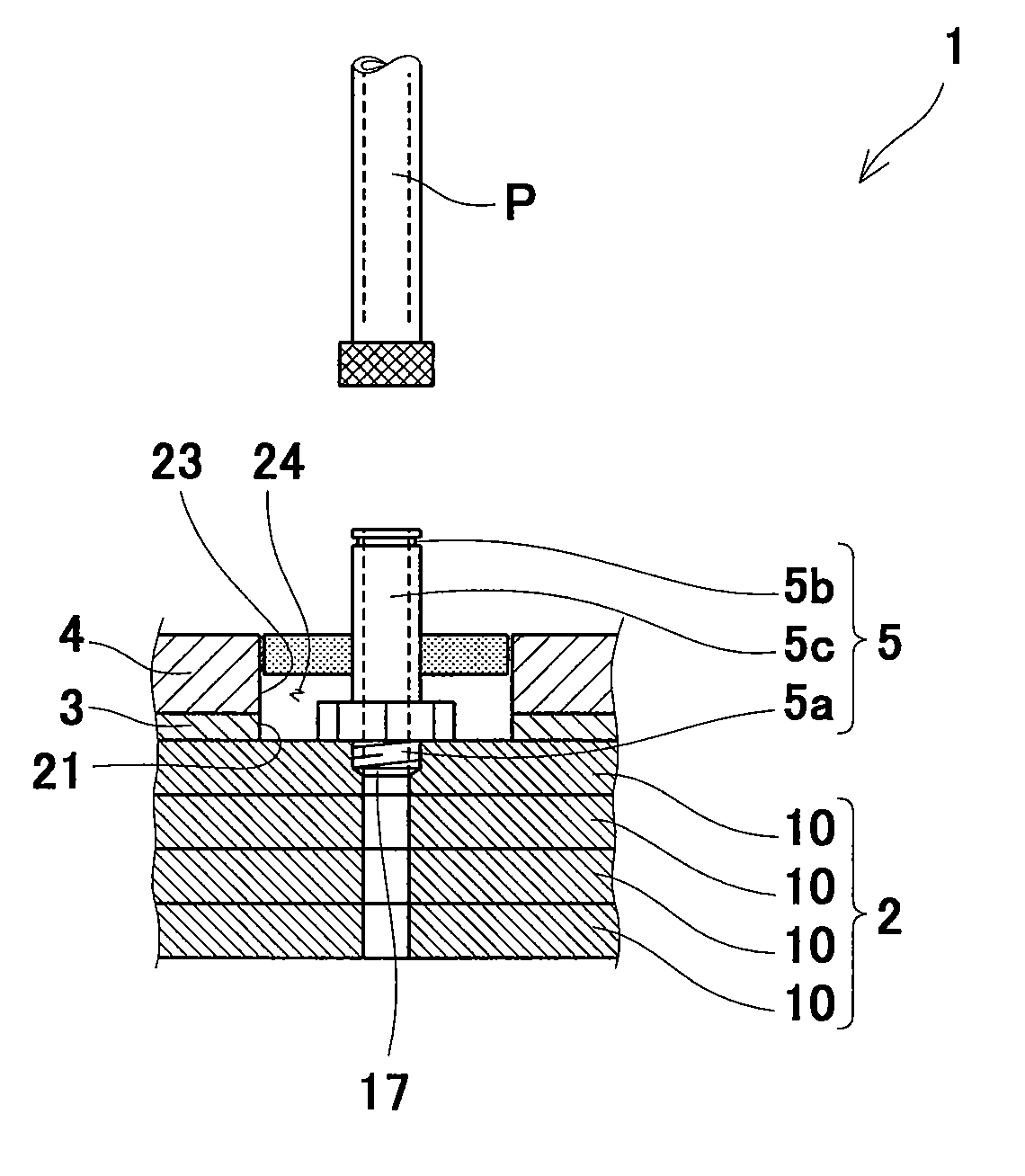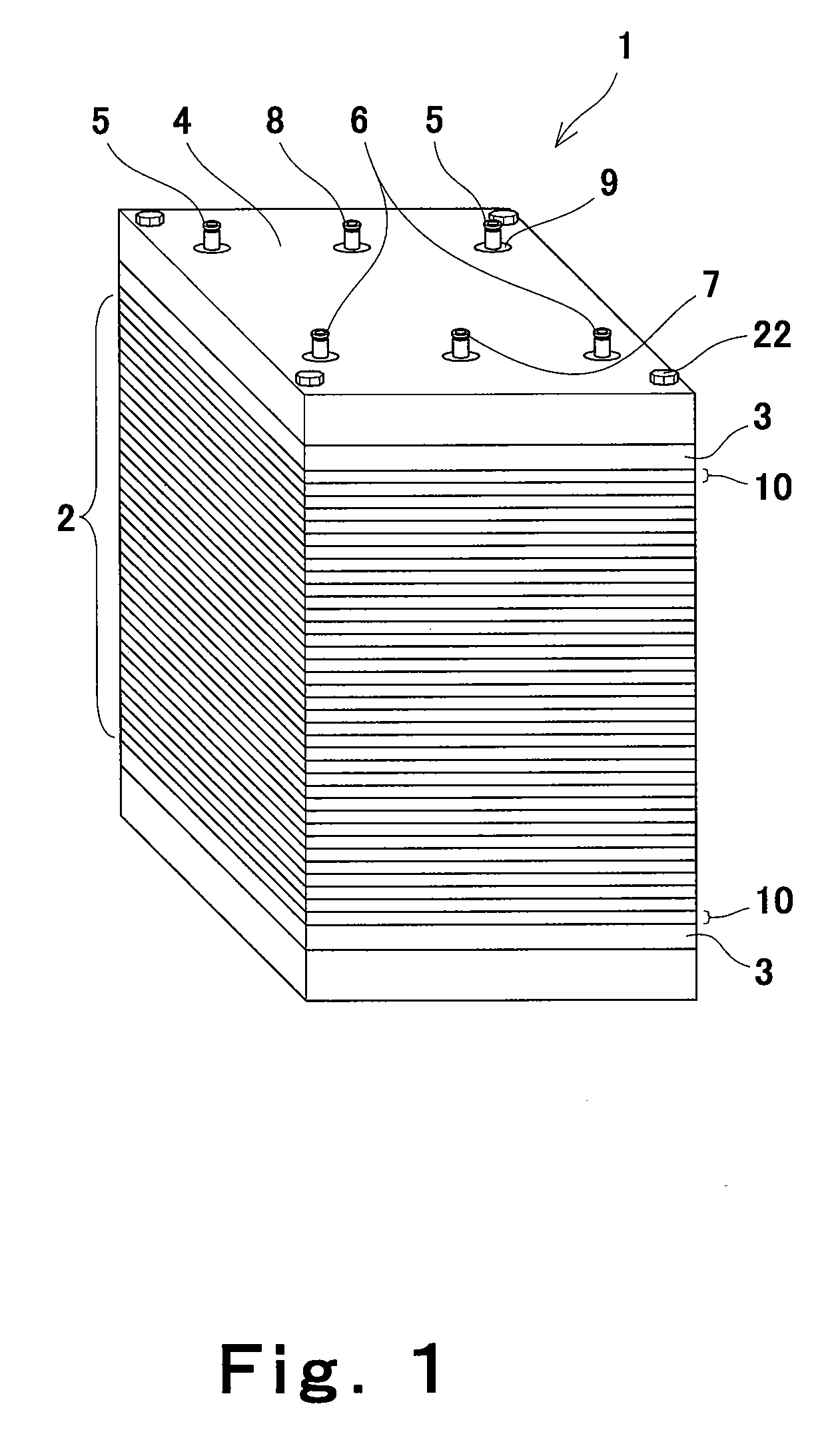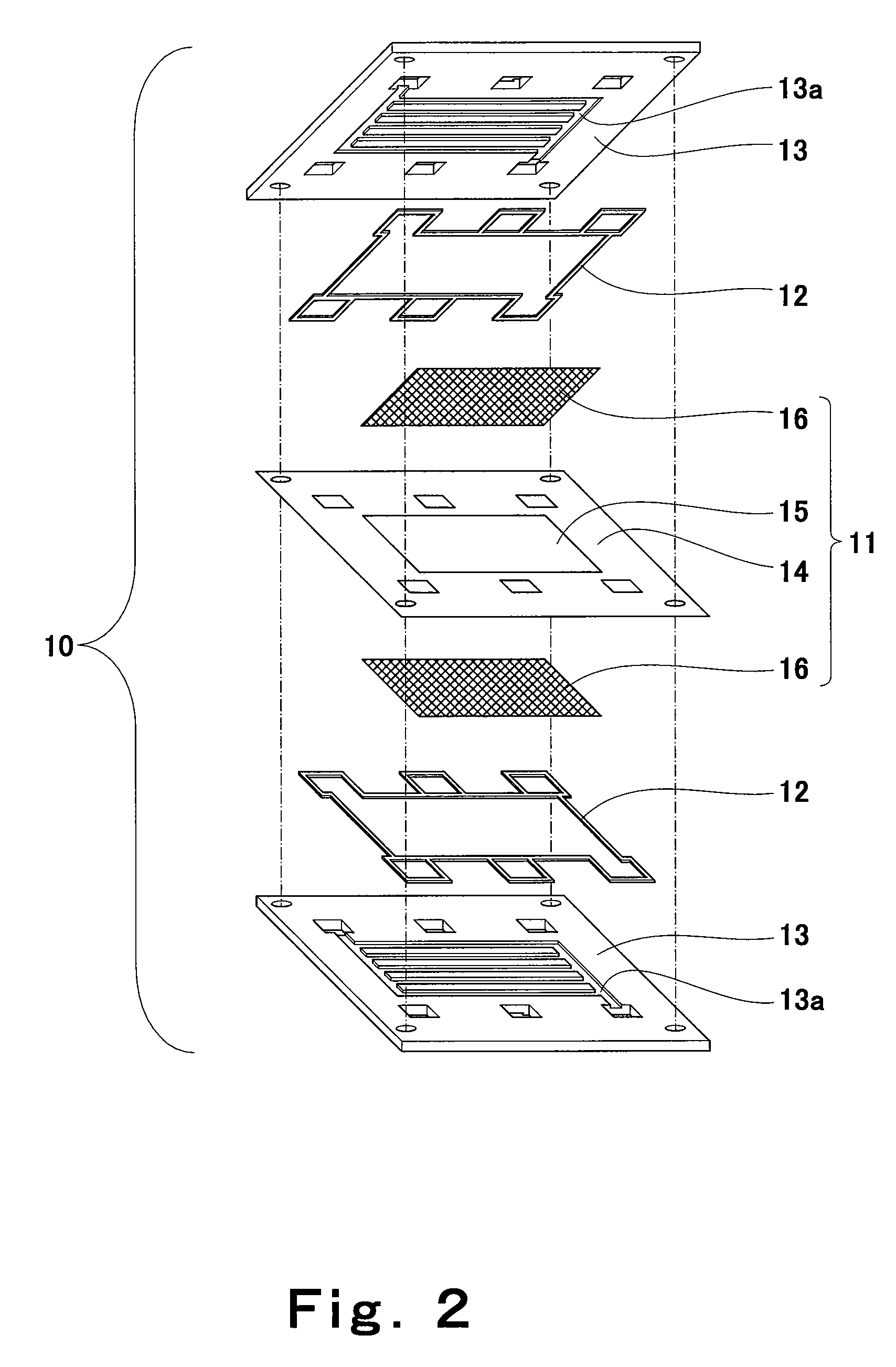Fuel cell
a fuel cell and cell technology, applied in the field of fuel cells, can solve the problems water condensation, performance degradation phenomenon, etc., and achieve the effect of preventing the supply of reaction gas, and reducing the power generation voltag
- Summary
- Abstract
- Description
- Claims
- Application Information
AI Technical Summary
Benefits of technology
Problems solved by technology
Method used
Image
Examples
embodiment 1
[0048
[0049]Embodiment 1 of the present invention will be described with reference to FIGS. 1 to 4.
[0050]First of all, a fuel cell 1 according to Embodiment 1 will be described with reference to FIGS. 1 to 3. FIG. 1 is a perspective view of a fuel cell 1 according to Embodiment 1. As shown in FIG. 1, the fuel cell 1 of Embodiment 1 comprises a cell stack 2, current collectors 3, end plates 4, joints 5 to 8, and closing members 9.
[0051]The cell stack 2 is formed to include plural cells 10 which are stacked. Typically, about 2 to 200 cells 10 are stacked to form the cell stack 2, according to a desired output electric power. FIG. 2 is an exploded perspective view of the cell 10 according to Embodiment 1. Each cell includes a MEA (Membrane Electrode Assembly) 11, gas seals 12 and separators 13.
[0052]The MEA 11 has a structure in which catalyst layers 15 are provided on both sides of a polymer electrolyte membrane 14 and gas diffusion layers 16 are stacked outside the catalyst layers 15....
embodiment 2
[0067
[0068]Subsequently, a fuel cell 1A according to Embodiment 2 will be described with reference to FIG. 5. The fuel cell 1A according to Embodiment 2 has the same structure as that of the fuel cell 1 of Embodiment 1 except for the joint and its surrounding portion, and therefore the structure of the fuel cell 1A except for the joint and its surrounding portion will not be described. For the same reason, in Embodiments 3 to 5 described later, the structure of the fuel cell except for the joint and its surrounding portion will not be described. FIG. 5 is an enlarged view of the joint 5 connected to the reaction gas supply inlet 17 and its surrounding portion in the fuel cell 1A according to Embodiment 2, in which FIG. 5(a) is a cross-sectional view and FIG. 5(b) is a perspective view. Herein, the structure of the joint 5 connected to the reaction gas supply inlet 17 and its surrounding portion will be described. The same occurs in the joints 6 to 8 and their surrounding portions. F...
embodiment 3
[0070
[0071]Subsequently, a fuel cell according to Embodiment 3 will be described with reference to FIG. 6. FIG. 6 is an enlarged view of the joint 5 connected to the reaction gas supply inlet 17 and its surrounding portion in the fuel cell 1B according to Embodiment 2, in which FIG. 6(a) is a cross-sectional view and FIG. 6(b) is a perspective view. Herein, the structure of the joint 5 connected to the reaction gas supply inlet 17 and its surrounding portion will be described. The same occurs in the joints 6 to 8 and their surrounding portions. As shown in FIG. 6, the fuel cell 1B according to Embodiment 3 has substantially the same structure as that of the fuel cell 1A according to Embodiment 2 but is different in structure from the fuel cell 1A according to Embodiment 2 in that the fuel cell 1A according to Embodiment 2 includes the closing member 9, while the fuel cell 1B according to Embodiment 3 does not include the closing member 9 but instead the through-hole 23 of the end pl...
PUM
| Property | Measurement | Unit |
|---|---|---|
| temperature | aaaaa | aaaaa |
| diameter | aaaaa | aaaaa |
| inner diameter | aaaaa | aaaaa |
Abstract
Description
Claims
Application Information
 Login to View More
Login to View More - R&D
- Intellectual Property
- Life Sciences
- Materials
- Tech Scout
- Unparalleled Data Quality
- Higher Quality Content
- 60% Fewer Hallucinations
Browse by: Latest US Patents, China's latest patents, Technical Efficacy Thesaurus, Application Domain, Technology Topic, Popular Technical Reports.
© 2025 PatSnap. All rights reserved.Legal|Privacy policy|Modern Slavery Act Transparency Statement|Sitemap|About US| Contact US: help@patsnap.com



